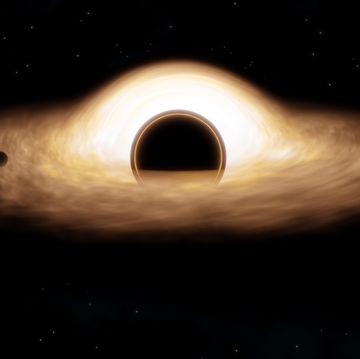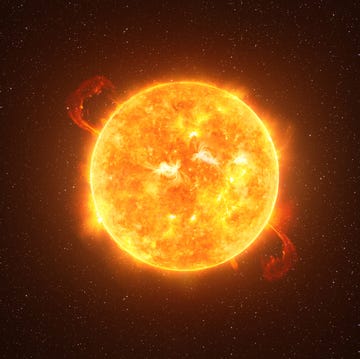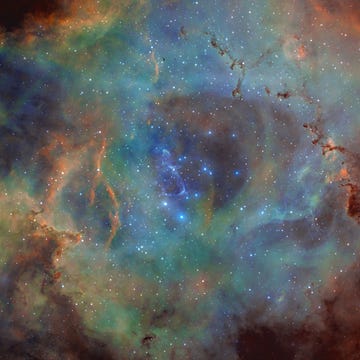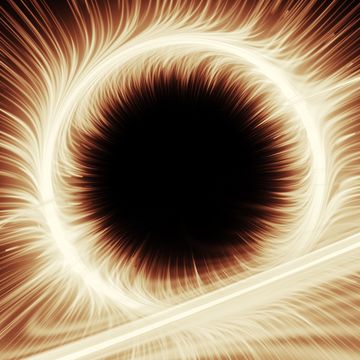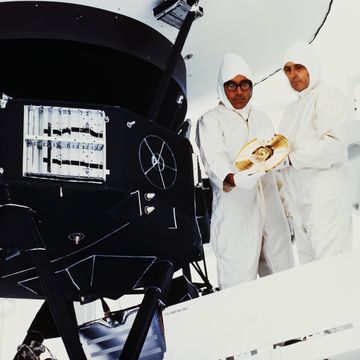If you're on the hunt for Earth-like planets that can sustain life, then your best bet might not be stars that look like our sun, but smaller, cooler stars—orange and red dwarfs. These, on average, have been found to host more Earth-sized planets, and they are far and away the most abundant. They make up more than 75 percent of the stars in our universe, and nearly every red dwarf star has at least one exoplanet.
But there's a potentially fatal flaw here: When exoplanets orbiting these stars are the right distance to hold liquid water, they tend suffer from what astronomers call rotational lockup. Much like how one side of our Moon always faces the Earth, one side of the planet always faces its star. With an always-day desert on one side and an arctic hellscape on the other, any planet's chance of being habitable looks far less likely.
Here comes some good news, though. A team of astrophysicists has announced that this thinking could be wrong—rotational lockup is not necessarily the rule for these exoplanets. As they report in the journal Science, the simple existence of an atmosphere (even one as thin as Earth's) can keep a planet twirling and habitable. According to Jérémy Leconte, the theoretical astrophysicist at the University of Toronto who lead the team that made this discovery, the finding means that a large number of already discovered Earth-like planets might be a lot more habitable than we thought. "Planets with potential oceans could thus have a climate that is much more similar to the Earth's than we've previously expected," he says.
Above: How heat is distributed on a spinning planet versus a rotationally locked one.
So how does an atmosphere cause a planet to spin faster? Jeff Coughlin, a SETI astronomer working with Kepler planet-hunting mission (who was not involved in the research), explains it this way:
"On Earth, light from the sun is what drives the weather in our atmosphere. And that weather, in the form of wind, constantly pushes against the planet—running into mountains, for example, or creating waves on the ocean. This friction is deposited in the rotation rate of our planet, helping to speed it up or slow it down."
Astrophysicists knew this. But, Coughlin says, scientists also believed that for an atmosphere to have an appreciable impact on a locked planet's rotation, it'd have to be incredibly, almost absurdly massive. Consider the case of Venus, which is close enough to our sun to be locked up rotationally. That hellish planet spins just fast enough to escape lockup (so slowly that one Venus day lasts 243 Earth days). And Venus's atmosphere is enormous—around 90 times as dense as our own.
But, when Leconte and his fellow researchers created and ran the first computer model of how an exoplanet's atmosphere might affect its rotation, they found something surprising. In fact, thinner atmospheres actually have a larger rotational effect on their planets. This might seem counterintuitive, but the reason seems to be that thinner atmospheres scatter less starlight. When starlight pierces into a planet's atmosphere without scattering, the extra heat creates a stronger atmospheric tide (a bulging of atmosphere, much like our ocean's tides) that yanks on the surface of the planet as it evens out, creating a stronger planetary rotation.
Using this model, Leconte's team found that Earth-sized planets with an Earth-like atmosphere will spin healthily around stars as small as orange dwarfs and some red dwarfs. The same could be true for even smaller stars, depending on the size of a planet and thickness of its atmosphere. If Venus were to have an atmosphere like Earth's—90 percent less dense than its real atmosphere—then it would spin about 10 times faster.
"More and more, we're discovering that there's a lot of ways to have a very nice, habitable planet around dwarf stars," Coughlin says. But there's something more at play here. "We really shouldn't be so narrow-minded in our assumptions about what types of planets could or could not be habitable," he says. Coughlin says that even a locked-up rotation is not necessarily a killer for a planet in terms of habitability—strong winds could help smooth out the temperature between the two sides.
"Every time we've made simple assumptions about habitability," he says, "we find out new ways why and how they don't apply."




